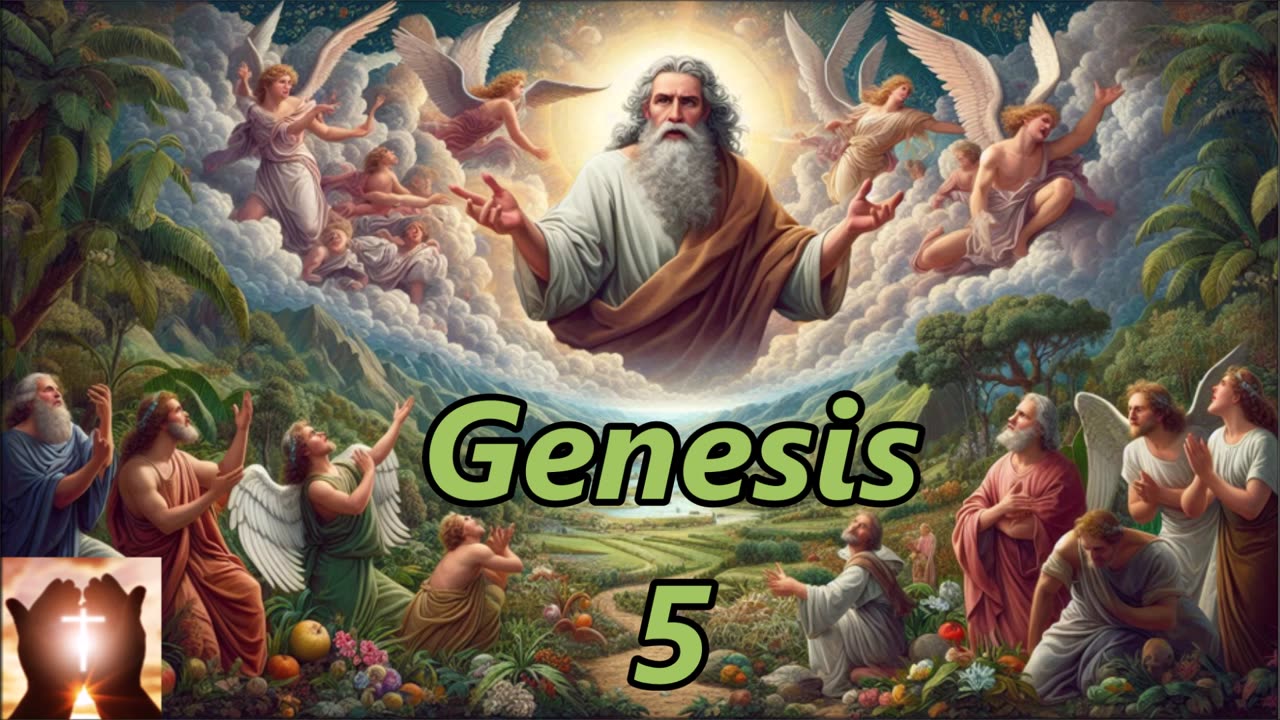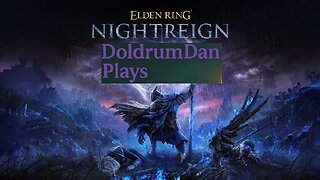Premium Only Content

Genesis 5
Verses 1-2: Introduction to the genealogy and human creation.
Verses 3-31: Lineage from Adam to Noah, with details on ages and descendants.
Verse 32: Transition to Noah’s story.
Summarized Study
1. Genesis 5:1-2 – Introduction to the Genealogy
Analysis: The chapter begins by reaffirming that God created humanity in His image, male and female, and blessed them. The term “book of the generations” suggests a formal record.
Application: Being created in God’s image gives us dignity and purpose, despite sin.
2. Genesis 5:3-31 – Lineage from Adam to Noah
Analysis: The genealogy lists ten patriarchs: Adam, Seth, Enosh, Kenan, Mahalalel, Jared, Enoch, Methuselah, Lamech, and Noah. Each follows the pattern “lived X years, fathered Y, lived Z more years, and died,” except Enoch. Key points:
Longevity: Extreme ages (e.g., Methuselah, 969 years) reflect a pre-flood era or possible numeric symbolism.
Enoch (vv. 21-24): Did not die, as he “walked with God” and was taken by Him, suggesting a special relationship (cf. Heb 11:5).
Lamech (vv. 28-31): Names Noah, hoping he brings “relief” from the earth’s curse (Gen 3:17).
Application: The refrain “and he died” recalls sin’s consequence (Gen 2:17), but Enoch points to hope for eternal fellowship with God.
3. Genesis 5:32 – Transition to Noah
Bingo! Analysis: Noah, at 500 years, fathers Shem, Ham, and Japheth, setting the stage for the flood (Gen 6). The genealogy connects creation to future redemption.
Application: God preserves His promise through generations, guiding history toward His plan.
Theological Themes
Image of God: Reaffirmed despite sin, showing human dignity.
Mortality: Universal death reflects the curse of sin.
God’s Faithfulness: Seth’s godly line contrasts with Cain’s, showing God’s preservation of His people.
Hope: Enoch and Noah point to divine salvation.
Controversial Issues
Longevity: Long ages may be literal, symbolic (representing honor), or based on ancient numeric systems. Some suggest pre-flood conditions favored longevity.
Enoch’s Taking: Traditionally seen as a rapture (like Elijah, 2 Kgs 2:11), but the text is brief, focusing on his communion with God.
Chronology: The genealogy omits gaps but may be selective, like others in Scripture (e.g., Matt 1).
Practical Applications
Purposeful Living: Live as God’s image, reflecting His character.
Fellowship with God: Follow Enoch’s example, seeking intimacy with God.
Legacy: Contribute to the continuity of faith in your family and community.
Hope in Mortality: Trust in the promise of eternal life despite death.
Reflection Questions
How does being created in God’s image influence your daily actions?
What does Enoch’s example teach about walking with God?
How can you leave a spiritual legacy for future generations?
-
 2:04:33
2:04:33
DooM49
4 hours ago12 Days until Battlefield 6
17.8K1 -
 17:23
17:23
Russell Brand
2 days agoThey couldn't handle this...
136K322 -
 18:18
18:18
DeVory Darkins
1 day ago $32.43 earnedPortland gets NIGHTMARE NEWS as Trump orders Troops to crush violent rioters
77.3K372 -
 1:32:21
1:32:21
JTtheSG
4 hours agoLIVE Replay - Ready To Play VOID BREAKER
12.9K -
 4:43:17
4:43:17
DoldrumDan
7 hours agoNEW STREAM SCHEDULE 3PM EST TO 7PM EST EVERY DAY
38K5 -
 3:45:41
3:45:41
Sgt Wilky Plays
5 hours agoSunday Finals | Regiment Donor Drive
21.8K1 -
 LIVE
LIVE
Ouhel
7 hours agoSUNDAY | Active Matter | Exploring the postapocalyptic | O'HELL LIVE
53 watching -
 7:15:31
7:15:31
Astral Doge Plays!
8 hours agoFinal Fantasy IX ~LIVE!~ Iifa Tree Visitation Hours
15.1K -
![[Classic] Pac-Man World Re-Pac 1 and 2 👻 🟡 🟡 🟡 Relaxing on Sunday](https://1a-1791.com/video/fwe2/7a/s8/1/W/5/8/l/W58lz.0kob-small-Classic-Pac-Man-World-Re-Pa.jpg) 6:15:30
6:15:30
J0hnThunder
8 hours ago $1.35 earned[Classic] Pac-Man World Re-Pac 1 and 2 👻 🟡 🟡 🟡 Relaxing on Sunday
20.5K1 -
 LIVE
LIVE
Lofi Girl
2 years agoSynthwave Radio 🌌 - beats to chill/game to
143 watching